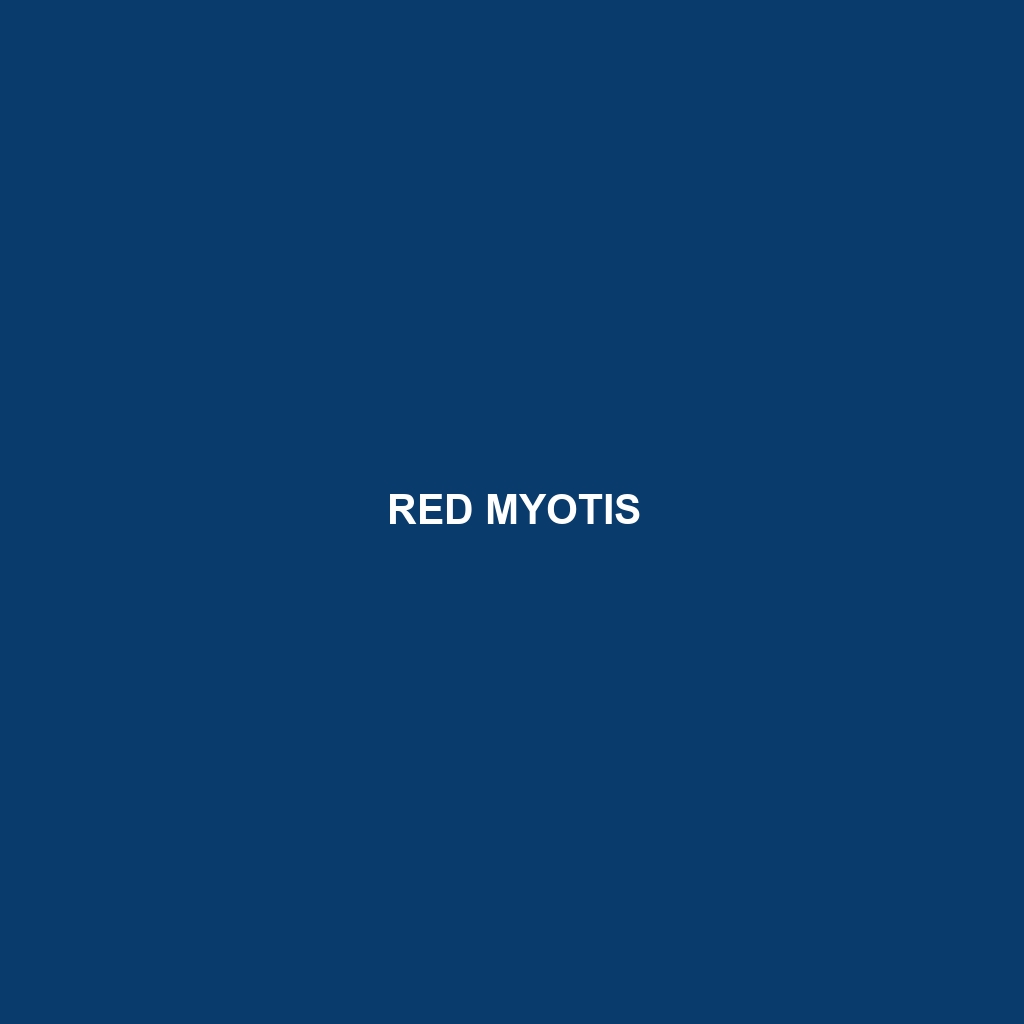Red Myotis: A Comprehensive Species Description
Common Name: Red Myotis
Scientific Name: Lasiurus borealis
Habitat
The Red Myotis is primarily found in North America, particularly in the eastern and central regions of the United States and parts of Canada. This species thrives in a variety of habitats, including deciduous forests, urban areas, wetlands, and near water bodies. Their preference for areas with abundant tree coverage makes them a common sight in mature woodlands and along riverbanks.
Physical Characteristics
The Red Myotis is a medium-sized bat, typically measuring between 8 to 12 cm (3 to 5 inches) in body length, with a wingspan reaching up to 30 cm (nearly 12 inches). Their distinguishing feature is their reddish-brown fur, which often appears more vibrant in the sunlight. They possess relatively large ears and a long, pointed snout, giving them a unique appearance among North American bats. Their wings are long and narrow, which allows for agile flight and maneuverability.
Behavior
Red Myotis bats are known for their distinct roosting habits. They typically roost alone or in small groups, often hanging upside down in tree foliage or underneath bark. Their nocturnal nature leads to a range of behaviors, including foraging in open areas and using echolocation to navigate and hunt for food. They are also known for their dramatic aerial displays during feeding, which can attract the attention of onlookers.
Diet
The diet of the Red Myotis primarily consists of insects, particularly moths, beetles, and other small invertebrates. They are known to forage both over water and in forested areas, utilizing their agile flight to catch prey mid-air. Their feeding habits align them with other bat species that help control insect populations, making them a vital part of the ecosystem.
Reproduction
Breeding for Red Myotis typically occurs in late summer, with females giving birth to one or two pups in early June. The pups are initially helpless and rely on their mothers for warmth and nourishment. As they grow, they will learn to fly and forage by late summer, enabling them to adapt to their environment and contribute to their population.
Conservation Status
Currently, the Red Myotis is classified as a species of “Least Concern” by the International Union for Conservation of Nature (IUCN). However, they face threats from habitat destruction, climate change, and diseases such as White-nose Syndrome, which has affected many bat populations in North America.
Interesting Facts
One fascinating fact about the Red Myotis is their ability to fly efficiently over water, making them well-adapted to their habitat. They can also live up to 10 years in the wild, an impressive lifespan for a bat. Additionally, this species is known for its striking reddish coloration, which helps them blend into their forest habitat during the day.
Role in Ecosystem
The Red Myotis plays a crucial role in ecosystem health by acting as a natural pest controller. By feeding on a significant number of insects, they help maintain the balance of insect populations in their habitats. Moreover, their presence indicates a healthy ecosystem, as bats are sensitive to environmental changes and habitat quality.
